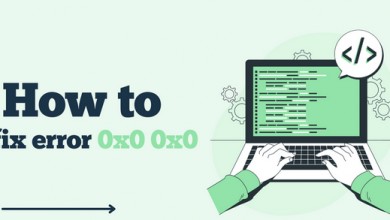How are Virtual Goods Shaping the E-commerce Landscape?

In recent years, the way we purchase and use items has significantly changed worldwide. The development of digital technology and the introduction of e-commerce platforms have changed how we interact with goods and services. The emergence of virtual goods, also referred to as digital goods or intangible goods, as brand-new types of merchandise have fundamentally altered the e-commerce scenario.
Virtual goods now make up a large portion of online purchasing, from virtual currencies to in-game items, digital music, and e-books. Virtual goods have been essential in reshaping e-commerce as consumers increasingly turn to online buying.
Here, in this blog we’ll go deeper into the world of virtual goods and consider how they affect the e-commerce environment. We’ll also talk about virtual goods’ potential and problems for consumers and businesses. So, let’s begin!
About Virtual Goods and Their Impact
The emergence of virtual goods as a brand-new type of commodity has changed the face of e-commerce. These intangible goods range from e-books and music to virtual money and in-game stuff. The virtual goods market is becoming increasingly popular among consumers and has become an integral part of the online shopping experience. Let’s examine the world of virtual goods in more detail and how it affects the e-commerce sector.
The fact that virtual goods are convenient and quickly accessible is one of their main benefits. Customers don’t need to wait for actual delivery to buy and download these things. This has increased impulse purchases and improved the enjoyment of shopping for customers.
Businesses now have new sources of income thanks to virtual goods. Businesses can now generate income outside of traditional product sales thanks to the growth of in-game purchases and virtual currencies. This has made it possible for firms to tap into new markets and diversify their revenue streams.
Additionally, the availability of virtual goods has created new commercial prospects for independent creators and small firms. Creators can now reach a worldwide audience without the requirement for physical distribution, thanks to the ability to sell virtual items online. As a result, small firms now have an equal opportunity to compete with bigger enterprises.
Virtual goods, however, can pose particular difficulties for consumers and businesses. The problem of piracy and copyright infringement is one of the main difficulties. Because of the simplicity of digital distribution, it is frequently challenging for firms to safeguard their intellectual property. Additionally, consumers might face issues of buying fake or illegal virtual products.
To sum it up, the use of virtual goods has had a huge impact on e-commerce, giving customers a more convenient shopping experience and businesses additional sources of income. To guarantee the long-term viability of virtual goods in the e-commerce sector, the issues of piracy and copyright infringement must be resolved.
Virtual Goods’ Challenges and Opportunities for Businesses and Consumers
In the E-commerce sector, virtual goods have created new opportunities and challenges for both businesses and consumers. Let’s examine these in greater detail.
Opportunities for Businesses:
- Revenue Stream Diversification
With the advent of virtual goods, companies can now generate income outside of traditional product sales. Virtual currencies, in-game purchases, and sales of digital content have given firms new revenue streams.
- Global Reach
With the ability to sell and distribute digital goods anywhere in the world, companies can access new markets without investing in physical distribution.
- Leveling the Playing Field
Small firms and independent producers can now compete with bigger enterprises by selling digital products online.
Challenges for Businesses:
- Piracy and Copyright Infringement
The ease of digital distribution has boosted copyright infringement and piracy, making it more challenging for companies to secure their intellectual property.
- Competition
With the popularity of virtual goods, firms must contend with one another to draw customers and set themselves apart from the competition.
- Limited Tangible Worth
Virtual goods lack tangible worth, which might make it challenging to persuade customers to buy them.
Opportunities for Consumers:
- Convenience
Customers can instantly buy and download virtual items, making shopping for them a convenient experience.
- Personalization
Consumers can tailor their online experiences to suit their preferences and interests by having the option to buy virtual products.
- Cost-Effective
Since virtual goods are frequently less expensive than actual ones, buyers can enjoy their preferred products for less money.
Challenges for Consumers:
- Counterfeit Goods
As digital distribution grows, buyers run the risk of buying unauthorized or counterfeit virtual goods.
- Security Risks
Consumers who buy virtual goods online may be at risk for security issues like identity theft and credit card fraud.
- Limited Tangible Value
Since virtual items have no real-world counterparts, buyers may be reluctant to buy them.
Overall, virtual goods have given businesses new revenue streams, increased their market reach, and gave customers a quick and affordable purchasing experience. To guarantee the long-term viability of virtual goods in the e-commerce sector, issues including piracy, copyright infringement, and security hazards must be addressed.
Future of Virtual Goods in Shaping the E-commerce Landscape
Their future appears bright as virtual goods continue to influence the e-commerce industry. Let’s look at some of the trends that will affect how virtual products develop in the future:
Higher Adoption
As more consumers grow accustomed to digital transactions and virtual experiences, it is anticipated that the adoption of virtual goods will rise.
Virtual Reality
Virtual goods’ future is anticipated to be strongly impacted by the development of virtual reality technology. Virtual reality will give customers individualized, immersive experiences, which will increase the attraction to virtual goods.
Blockchain Technology
Blockchain technology is anticipated to completely transform the virtual goods market by enabling fractional ownership of virtual goods, securing transactions, and defending intellectual property rights.
Augmented Reality
As augmented reality technology becomes more widely used, consumers will be able to engage with and fully experience virtual objects.
Social Media Integration
Social networking platforms will increasingly integrate virtual goods, allowing users to exchange and interact with virtual items with their friends and followers.
Conclusion
To sum up, virtual goods have changed the e-commerce scenario by giving companies new sources of income and enabling consumers to shop conveniently and affordably. The future of virtual products is bright with the development of virtual reality, augmented reality, blockchain technology, and social media integration, despite obstacles like piracy and security risks. As demand for virtual goods rises, businesses must keep innovating and adapting to stay competitive in the ever-changing e-commerce market.
![Photo of [pii_email_adba8ec29bf46a0e5af1] Error Code Fixed](https://www.techgame.org/wp-content/uploads/2020/11/Untitled-12-390x220.png)



